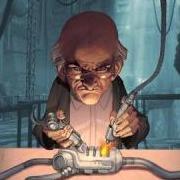
T/S parameters for small vented enclosure design
By
edouble101, in Subwoofers / Speakers
-
Recently Browsing 0 members
No registered users viewing this page.
-
-
Recent Topics
-
- 6 comments
- 1,671 views
-
- 20 comments
- 429 views
-
- 400 comments
- 34,465 views
-
- 3 comments
- 150 views
-
- 4 comments
- 271 views
-
- 2 comments
- 791 views
-
-
-
Recent YouTube Posts



